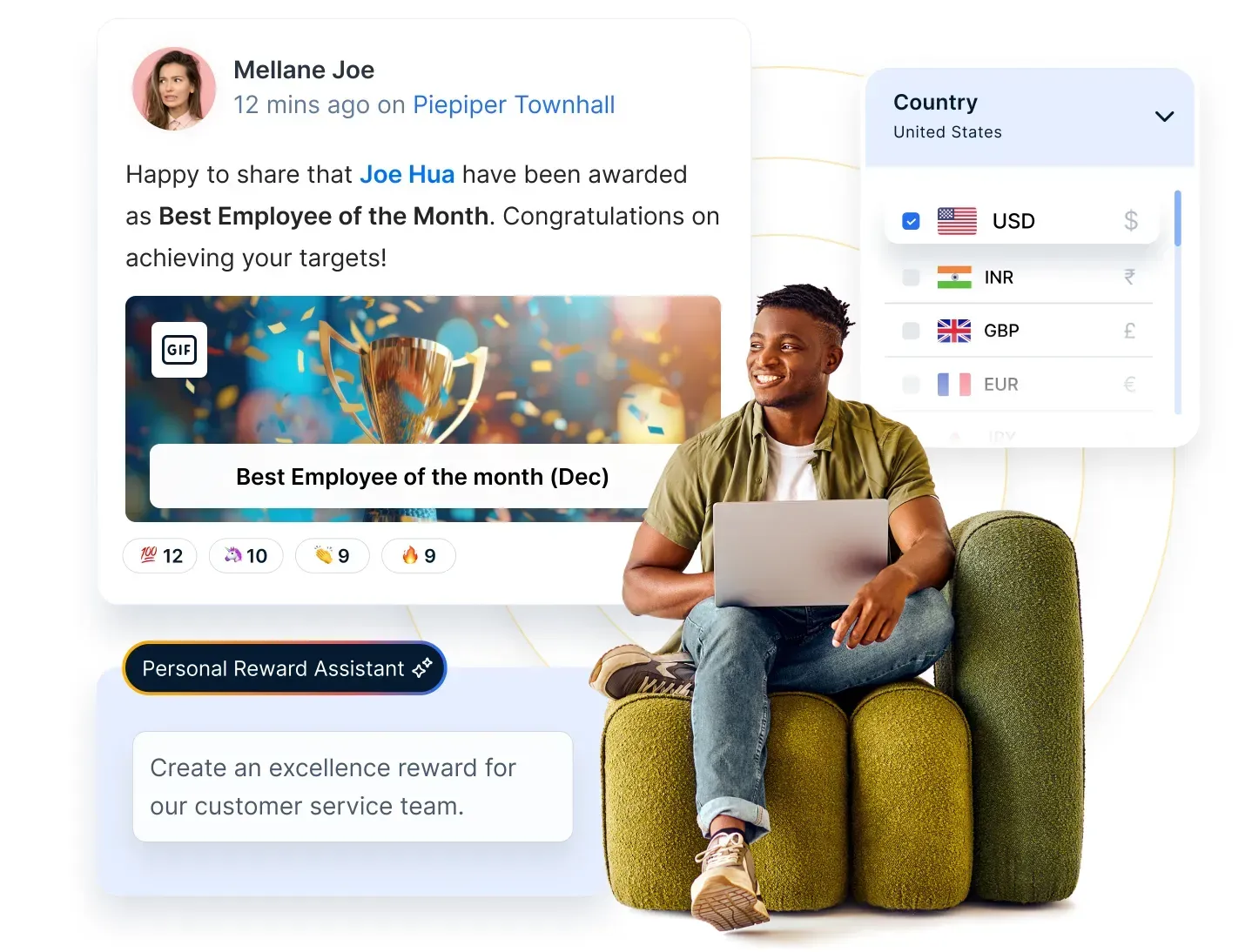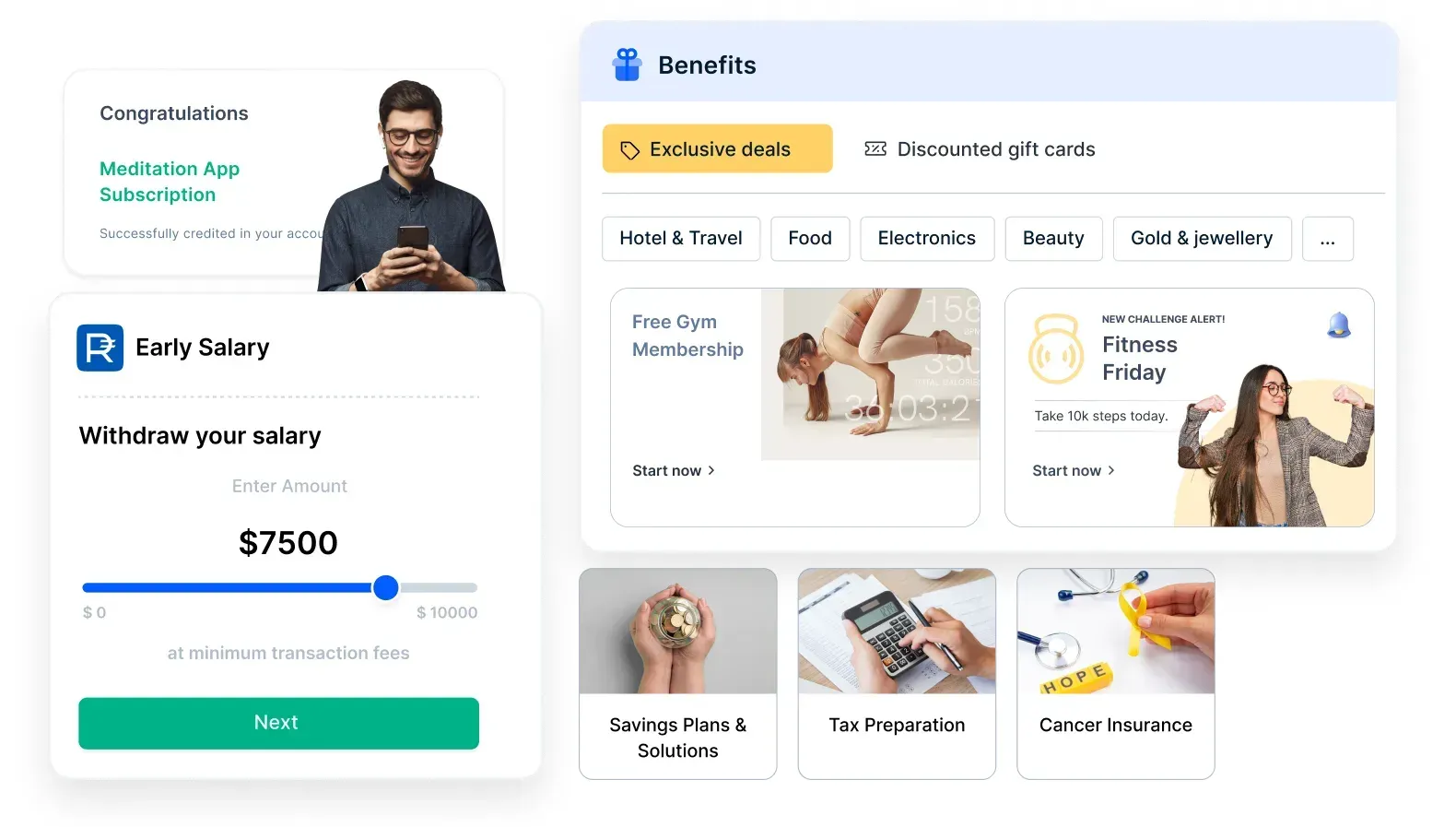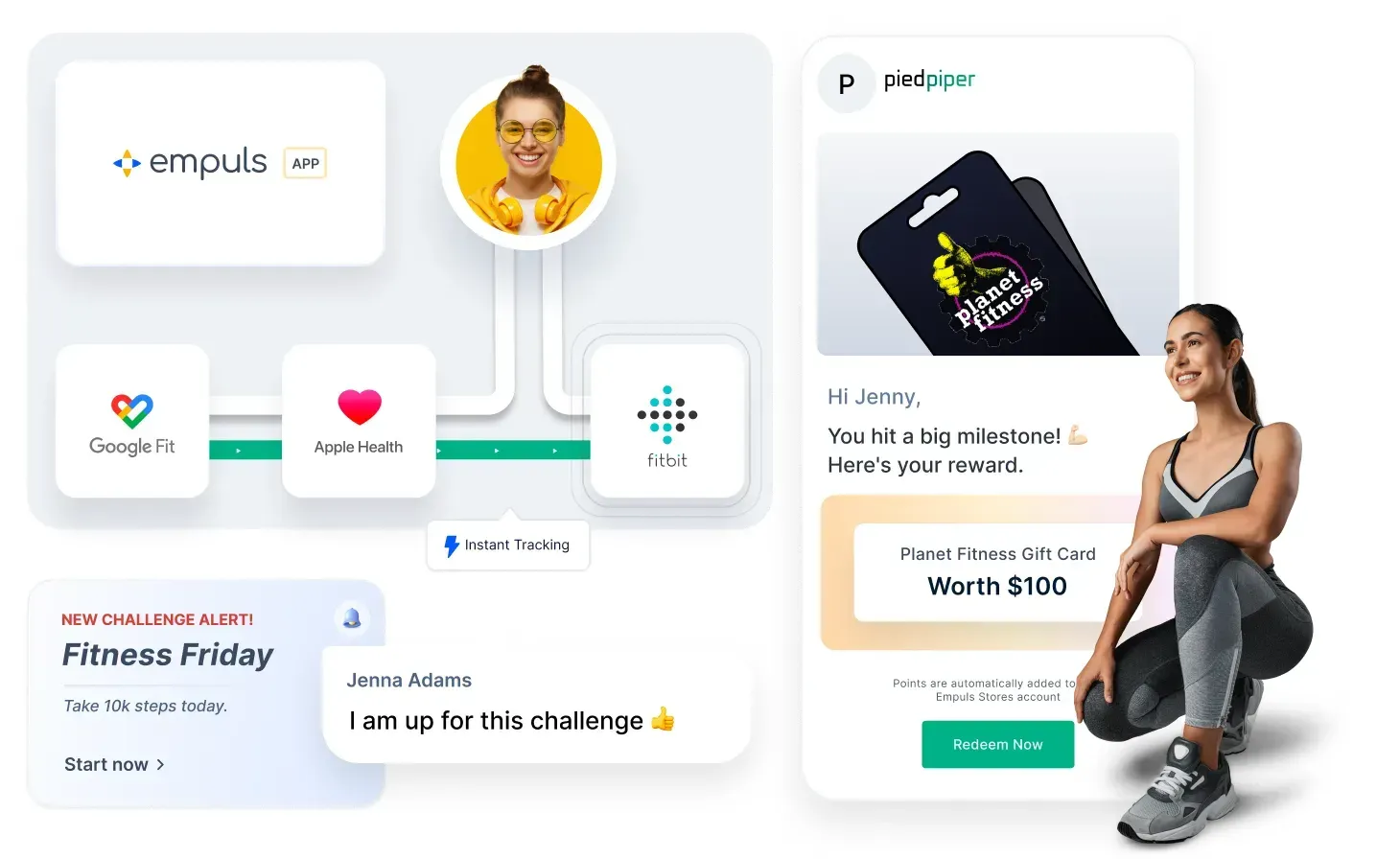Employee Engagement in the IT Industry: Strategies That Actually Work
Discover practical strategies to improve employee engagement in the IT industry. Learn about the key challenges, how Empuls empowers tech teams, and real results from global IT companies like KPIT.
On this page
The IT industry is known for its fast-paced nature, round-the-clock operations, and relentless pressure to stay ahead. With tight deadlines, complex projects, and long hours, it’s no surprise that burnout is common and attrition rates are high. Amid all this, one thing often gets overlooked—employee engagement.
Employee engagement in the IT industry isn’t just about keeping people happy. It’s about creating an environment where tech professionals feel valued, connected, and motivated to do their best work. Engaged employees deliver higher productivity, bring fresh ideas to the table, and are far more likely to stay loyal to their organization.
That’s where platforms like Empuls step in—bringing in the tools needed to recognize effort, listen to employee feedback, and build a people-first culture even in the most demanding tech environments.
Key challenges affecting employee engagement in the IT sector
While the IT industry has always been at the forefront of innovation, it also faces unique workplace challenges that directly impact employee engagement. These challenges go beyond basic job dissatisfaction—they’re rooted in the fast-paced, high-pressure nature of the work itself. Understanding these barriers is the first step toward building an environment where tech talent feels motivated and connected.
1. Intense workloads and tight deadlines
IT professionals often juggle multiple deliverables, live bug fixes, late-night deployments, and rapid product rollouts. Constant firefighting becomes part of the job, leaving little time for reflection or rest. Over time, this leads to mental fatigue, disengagement, and in some cases, burnout.
2. Remote and hybrid fatigue
Remote work may be the norm in the IT sector, but it comes with its own problems—loneliness, blurred boundaries, and fewer organic interactions. When people work in isolation for too long, they begin to feel disconnected from their teams and the organization’s goals.
3. Limited visibility and recognition
Many tech roles operate behind the scenes, and their contributions don’t always get noticed unless something breaks. When employees don’t feel seen or recognized, it impacts their sense of value and reduces their emotional connection to the workplace.
4. Lack of meaningful communication
Too often, communication in IT companies is limited to task updates and meeting invites. There’s a lack of transparency around bigger decisions, company direction, and leadership messages. This disconnect leaves employees feeling excluded and out of sync with what’s happening around them.
5. Repetitive tasks and lack of creativity
Many developers and engineers enter the industry driven by curiosity and a love for problem-solving. But routine tasks, legacy systems, and ticket-based work can lead to creative stagnation. Without opportunities to innovate or explore, engagement levels start to drop.
6. Unclear career progression
IT roles don’t always follow a linear growth path, and employees often struggle to see where their career is headed. When promotions and growth opportunities aren’t clearly communicated or structured, employees feel stuck—regardless of their performance.
7. Lack of real-time feedback and support
In a fast-moving industry, waiting for annual reviews doesn’t work. IT teams need frequent check-ins, real-time feedback, and support when things go wrong. When there’s a gap in feedback or managerial support, it leads to uncertainty and low confidence.
Proven strategies to improve employee engagement in the IT industry
Employee engagement in the IT sector calls for a deliberate and people-first approach. High-pressure environments, long work hours, and remote collaboration can take a toll on motivation. Here’s how companies can step up and drive engagement that lasts.
1. Build a culture of continuous recognition
Most IT roles are behind the scenes—coding, testing, fixing bugs, and solving system issues that keep operations running smoothly. When this effort goes unrecognized, employees start feeling undervalued. Creating a culture where appreciation happens in real-time—be it through peer-to-peer shoutouts, team-wide kudos, or milestone celebrations—makes a lasting difference.
Empuls helps embed this culture by enabling instant, public recognition across teams, along with a wide range of personalized rewards that keep morale high.
2. Offer growth opportunities and upskilling
The tech industry evolves fast, and IT professionals want to keep growing with it. When employees feel stuck in repetitive tasks without learning something new, disengagement sets in. Offering certifications, access to learning platforms, stretch assignments, or mentorship programs shows a clear investment in their future.
With Empuls, organizations can track learning progress, celebrate skill achievements, and create recognition campaigns tied to learning goals—turning growth into a shared journey.
3. Encourage flexibility and work-life balance
Back-to-back deployments and midnight troubleshooting can quickly wear down even the most passionate developer. Offering flexible hours, remote work options, or mental health days helps employees regain balance and recharge. These gestures don’t just support well-being—they increase loyalty.
Empuls allows companies to track employee well-being trends through wellness surveys and pulse checks, helping HR take timely action to prevent burnout.
4. Facilitate transparent internal communication
When communication is limited or top-down, it can feel like employees are working in a vacuum. Keeping teams informed about company goals, leadership updates, team wins, and upcoming changes makes people feel included and trusted. It also cuts down confusion and builds a sense of direction.
Empuls supports internal communication with features like company-wide announcements, engagement feeds, and group recognition—all in one collaborative space.
5. Run regular check-ins, surveys, and feedback loops
You don’t have to guess what your employees are feeling—just ask. Regular engagement surveys, one-on-one check-ins, and anonymous feedback forms help leaders spot what’s working and what’s not. The key is to act on the feedback, not just collect it.
Empuls simplifies this process with real-time engagement survey tools, sentiment analysis dashboards, and feedback tracking—all designed to capture the voice of your tech teams.
6. Gamify achievements and project milestones
Reaching deadlines and solving complex problems can be exhausting, but it doesn’t have to be boring. Gamifying work through challenges, point-based rewards, and digital leaderboards injects fun into routine tasks. It also promotes healthy competition and team spirit.
Empuls enables companies to gamify milestones through contests, reward-based achievements, and recognition walls—helping teams feel energized and proud of their progress.
7. Personalize the employee experience
No two developers, analysts, or engineers are the same. A one-size-fits-all approach to engagement just doesn’t work in the IT industry. Personalizing the experience—through tailored communication, role-specific rewards, or custom learning paths—makes employees feel seen and understood.
Empuls allows HR teams to segment communication, personalize rewards, and create targeted campaigns that reflect each employee’s role, location, or team preference.
8. involve employees in decision-making
When employees are part of the conversation, they’re more likely to care about the outcome. Inviting feedback on new tools, process improvements, or project retrospectives gives IT teams a sense of ownership. This involvement deepens trust and drives engagement naturally.
Empuls makes it easy to collect employee opinions through pulse surveys, quick polls, and sentiment checks—helping leaders make decisions that reflect real team needs.
9. Celebrate team wins, not just individual success
IT projects are often team efforts—devs, QA, DevOps, product managers, and designers all contribute to a single release. Celebrating team achievements reinforces collaboration and collective accountability. It also builds pride in shared accomplishments.
With Empuls, you can spotlight team wins through social feeds, team-wide rewards, or project-based recognition campaigns that highlight group effort over individual praise.
10. Offer early wage access and financial wellness support
In high-stress IT environments, financial security plays a key role in reducing anxiety and improving focus. Offering early access to earned wages can ease unexpected financial pressure and show that the company genuinely cares about employees’ lives beyond work.
Empuls provides early wage access solutions that let employees withdraw a portion of their earned salary before payday—helping reduce stress and improve financial well-being.
11. Provide exclusive employee discounts and lifestyle perks
Perks don’t always need to be flashy. Sometimes, everyday savings matter more—like discounts on food delivery, electronics, wellness products, or even fitness memberships. These small benefits can add up and positively impact how employees feel about their workplace.
With Empuls, companies can offer access to 10,000+ brand discounts across categories—making everyday spending a little lighter and a lot more appreciated.
12. Introduce tax-saving fringe benefits
Offering tax-efficient benefits like meal cards, fuel allowances, and communication reimbursements not only helps employees take home more money but also shows that the organization is proactive about their financial health.
Empuls helps streamline tax-saving fringe benefits so employees can manage and track them easily through a unified platform, reducing paperwork and confusion.
How Empuls supports IT companies in driving engagement
IT organizations need more than scattered initiatives to keep their workforce engaged—they need an integrated platform that understands the challenges of tech teams and brings everything together in one place. That’s exactly what Empuls delivers. It’s not just a tool, but a complete employee engagement ecosystem designed for modern, fast-paced companies.
Centralized employee recognition and rewards
Empuls makes it easy to recognize great work instantly. Whether it’s peer-to-peer shoutouts, milestone celebrations, or project-based rewards, teams can acknowledge effort in real time. Employees also get access to a global rewards catalog, so appreciation feels personal and meaningful.

Built-in pulse surveys and engagement feedback
Empuls allows IT companies to run regular engagement surveys, sentiment polls, and employee feedback loops—all without juggling multiple tools. The insights are easy to understand, helping leaders take timely action to improve morale, culture, and team dynamics.

Employee benefits and financial wellness tools
From early access to earned wages to tax-saving fringe benefits and lifestyle discounts, Empuls simplifies how IT companies care for their employees’ financial well-being. This reduces stress, improves loyalty, and creates a culture where employees feel supported inside and outside of work.

Streamlined communication and culture-building
Empuls brings everyone onto a shared engagement feed where updates, celebrations, and key messages are posted transparently. It helps build a connected workplace where employees don’t feel like they’re working in silos—even across remote and hybrid teams.

Gamification and engagement campaigns
With built-in tools for creating contests, digital badges, and team-wide leaderboards, Empuls helps IT teams bring fun and energy back into their day-to-day work. Whether you’re celebrating the completion of a sprint or kicking off a hackathon, Empuls has everything to make it engaging.

How KPIT transformed employee engagement with Empuls
KPIT Technologies, a global leader in automotive software and mobility solutions, faced multiple challenges with its traditional rewards and recognition (R&R) setup. Their legacy platform relied on physical rewards, which led to high delivery failures, employee dissatisfaction, and underutilization of reward points.
To solve this, KPIT partnered with Empuls to build a seamless, digital-first engagement experience for their globally distributed teams.
Key outcomes after adopting Empuls:
- Seamless implementation across geographies including India, the US, Europe, Japan, Korea, and Thailand
- Over 20,000 digital reward options across multiple categories and currencies
- Smooth redemption process through e-vouchers, reducing logistical hassles
- Increased employee satisfaction and a shift toward a recognition-first culture
- Strengthened alignment with KPIT’s internal philosophy of fostering a "culture of excellence
Empuls helped KPIT move from transactional gifting to meaningful recognition. With features like social appreciation feeds, automated reward workflows, and diverse reward options, employees finally had a reason to redeem and enjoy the rewards they earned.
This transformation didn’t just upgrade a system—it upgraded how employees felt. With a more efficient, personalized, and global R&R program, KPIT successfully boosted engagement and morale across teams.
Explore Empuls and see how your organization can build a more connected, motivated, and high-performing workforce.
Visit Empuls →
Conclusion: Building engagement that lasts in the IT sector
Employee engagement in the IT industry isn’t just a feel-good initiative—it’s a necessity. With demanding workloads, remote teams, and constant pressure to innovate, keeping employees motivated and connected requires consistent, thoughtful action.
The good news? It doesn’t have to be complex. A mix of recognition, meaningful benefits, regular feedback, and transparent communication can completely shift how employees feel about their work.
That’s where platforms like Empuls make a real difference. From automating recognition to delivering global rewards and running real-time engagement surveys, Empuls gives IT companies the tools they need to create a thriving workplace—one where employees feel valued, supported, and excited to contribute.
As the tech sector continues to evolve, so should the way we engage the people driving it. Because when employees are engaged, everything else—from performance to retention—falls into place.


















